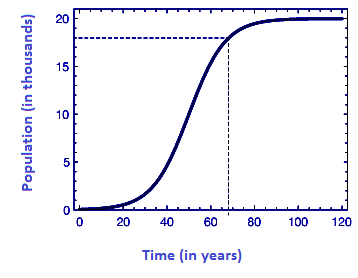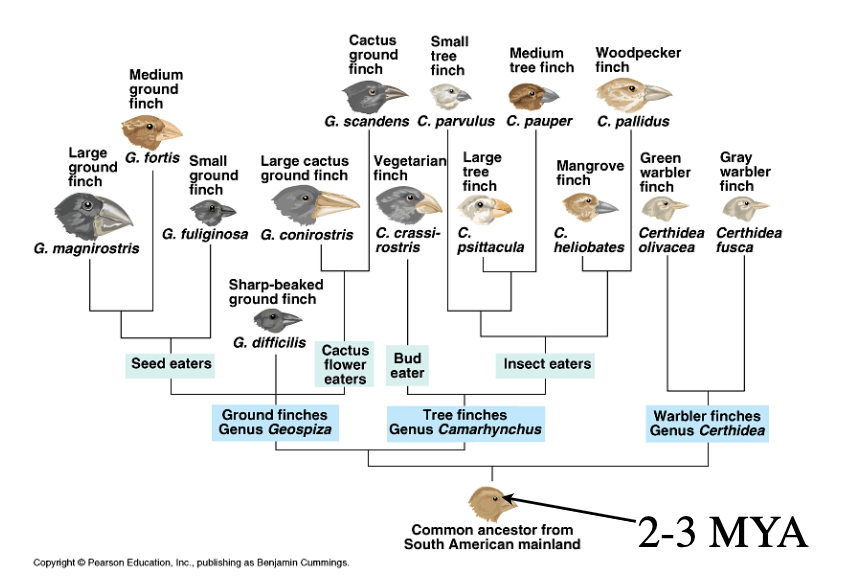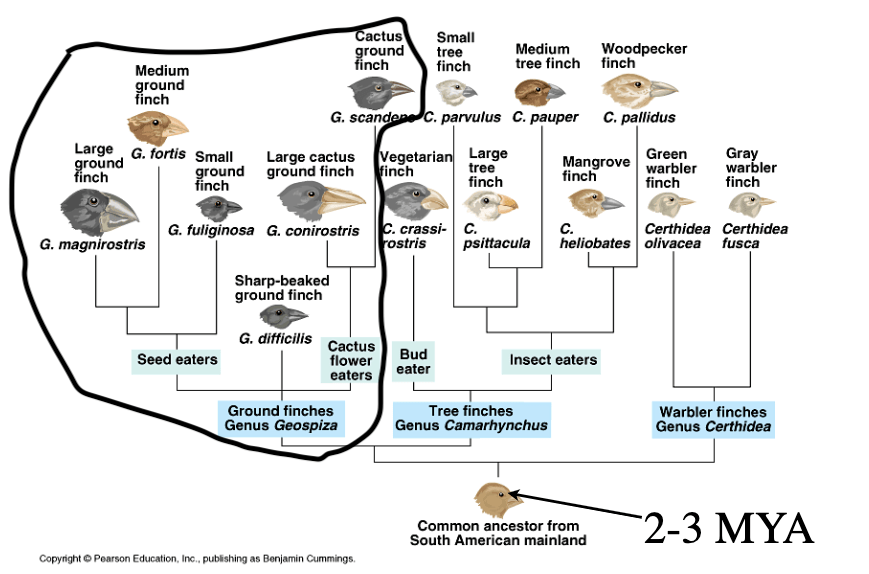How do we define evolution in terms of this class?
Change in alleles over time
What is the difference between genotype and phenotype?
Genotype: Genes!
Phenotype: physical attributes
What is the difference between the morphological and the biological species concepts?
Morphological concept defines species as a group of organisms that is anatomically distinct from another group while biological concept defines species as a group of organisms that can potentially interbreed in nature
Determine if this is a proximate or ultimate hypothesis:
The Douglas Squirrel throws their cones on the ground by using their arm and looking where they want it to go.
Proximate
What is a keystone species? Give an example of a predator that is a keystone species
A species that exerts an impact on its community that is both strong and disproportionate to its abundance
Examples: lions, wolves, sea otters
What are the 4 forces of evolution?
Genetic drift, gene flow, mutation, natural selection
What does it mean for a population to be in Hardy-Weinberg Equilibrium?
No evolution is occurring
What is the principle of parsimony?
It is the most likely explanation or pattern that implies the least amount of change on a phylogenetic tree
Draw the population graph that shows density-dependent growth.
Logistical

Which 4 factors influence community diversity?
1. Competition
2. Consumption
3. Mutualism
4. Time
What are Darwin's 4 postulates?
1. Individuals in a population are variable
2. Some of the variations are passed from parents to offspring
3. Some individuals are more successful at surviving and reproducing than others
4. Survival and reproduction is not random (survival of the fittest)
Can you find the number of heterozygous individuals without being explicitly told?
No
Define analogous and homologous traits
Analogous: traits that are similar for reasons other than common ancestry
Homologous traits: traits that are similar due to shared ancestry
A bird can either raise her siblings (from a different father) or her own young. How many of her sisters will she have to raise to equal the fitness benefit of raising 5 of her own?
10 half siblings
What is the difference between species richness and species evenness
Species richness: the number of species in a community
Species evenness: relative abundances compared with one another
You collect a bunch of seeds from around Eugene and use then in an artificial selection experiment in the lab under identical conditions. you are interested in leaf hairs. the hairs on the first leaf are counted for 100 plants that you grew and the mean is 13.5 hairs with a variance of 4.2 hairs^2. what are h^2, Vg, Vp, and Ve for the lab population?
Ve = 0
Vp = 4.2 hairs^2
Vp=Vg+Ve so Vg=4.2 hairs^2
h^2=Vg/Vp --> 4.2/4.2=1.0
A population of butterflies is in a valley. 25 are blue, 39 are purple, and 36 are green. Blue is dominant, purple is heterozygous, and green is recessive. Determine if this population is in H-W equilibrium
p=0.445 q=0.555
p2=0.198=20 blue 2pq=0.494=49 purple q2=0.308=31 green
Expected does not equal observed so NO
What kind of RIM is this an example of: pollen grains of one plant species fail to germinate on the stigma of another plant species
Gametic isolation
A population of sparrows grows continuously with a constant per capita growth rate. It took 5 years to grow from 150 individuals to the current population of 2000 individuals. How long will it take to grow from 2000 to 9000?
r=0.518 ind/ind/yr
t=2.9 years
Which community has a higher species richness?
Community 1: 🐶🐶🐶🐛🐛🐛🐝🐝🐝🐓🐓🐓
Community 2: 🐶🐶🐶🐶🐛🐝🐝🐓🐓🐓🐓
They have the same species richness because they both have 4 species
What does it mean when heritability is close to 0? close to 1?
Close to 0: genes don't contribute at all to phenotypic differences
Close to 1: genes are the only reason for individual differences
Hardy-Weinberg:
A population of cattle lives on a farm and may or may not be in Hardy-Weinberg equilibrium. There are 107 individuals with a complete brown coat, 79 individuals with brown and white spots, and 14 individuals with a complete white coat. You assume brown is dominant and white is recessive.
You (a biologist) are asked to determine if a population is in H-W equilibrium.
Yes!
p=0.7325 q=0.2675
p2=0.537 2pq=0.392 q2=0.0716
Expected: 107 brown, 79 spotted, 14 white
The same as observed.
what is the smallest monophyletic group that includes the cactus ground finch and the large ground finch?

A realistic population of chipmunks has a rmax of 0.75 and a carrying capacity of 1800 individuals. If the population is currently at 1300 individuals, find the per capita growth and population growth.
r=0.21 ind/ind/yr
dN/dt=270 ind/yr
In order to maximize energy efficiency, it is best for a community to consume what type of organisms? Why?
Primary producers, as each level on the trophic scale loses a majority of energy intake towards organism upkeep, it is the most direct route to the energy source by consuming primary producers.